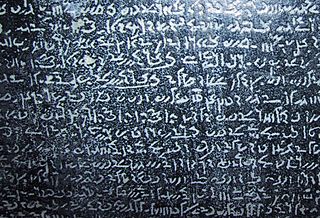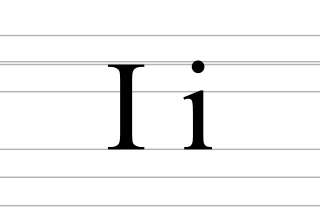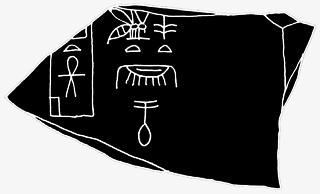Standards
Important as transliteration is for Egyptology, there is no one standard scheme in use for hieroglyphic and hieratic texts. However, there are a few closely related systems that can be regarded as conventional. Many non-German-speaking Egyptologists use the system described in Gardiner 1954, whereas many German-speaking scholars opt for that used in the Wörterbuch der ägyptischen Sprache (Erman and Grapow 1926–1953), the standard dictionary of the ancient Egyptian language. However, there is a growing trend, even among English-speaking scholars, to adopt a modified version of the method used in the Wörterbuch (e.g., Allen 2000).
Although these conventional methods of transliteration have been used since the second half of the nineteenth century to the present time, there have been some attempts to adopt a modified system that seeks to use the International Phonetic Alphabet to a certain extent. The most successful of these is that developed by Wolfgang Schenkel (1990), and it is being used fairly widely in Germany and other German-speaking countries. More recent is a proposal by Thomas Schneider (2003) that is even closer to the IPA, but its usage is not presently common. The major criticism of both of these systems is that they give an impression of being scientifically accurate with regard to the pronunciation of Egyptian, though the actual accuracy is debatable. Moreover, the systems represent only the theoretical pronunciation of Middle Egyptian and not the older and later phases of the language, which are themselves to be transliterated with the same system.
Table of transliteration schemes
Although the system of Egyptian hieroglyphs is very complicated, there are only 24 consonantal phonemes distinguished, according to Edel (1955) [1] transliterated and ordered alphabetically in the sequence:
- ꜣ j ꜥ w b p f m n r h ḥ ḫ ẖ z s š q k g t ṯ d ḏ
A number of variant conventions are used interchangeably depending on the author.
The following table shows several transliteration schemes. The first column shows the uniliteral hieroglyph (see #Uniliteral signs below) corresponding to the sound.
| Glyph | Brugsch | Erman | Budge | Erman & Grapow | Gardiner | Edel | Manuel de Codage | Hodge | Schenkel | Hannig; Allen | Hoch | Schneider | Leiden Unified | Conventional Egyptological pronunciation |
|---|---|---|---|---|---|---|---|---|---|---|---|---|---|---|
| 1889 | 1894 | 1910 | 1926–1953 | 1957 | 1955 [1] | 1988 | 1990 | 1991 | 1995; 2000 | 1997 | 2003 | 2023 | ||
| 𓄿 | ꜣ | ꜣ | a | ꜣ | ꜣ | ꜣ | A | ꜣ | ꜣ | ꜣ | ꜣ | ɹ | ꜣ | /ɑ,ɑː/ |
| 𓇋 | ʾ | ı͗ | ȧ | ı͗, j | ı͗ | j | i | ʔ | ı͗ | j | ı͗ | ı͗ | ı͗ | /i,iː,j/ |
| 𓏭 | " | ï | i | j | y | j | y | y | ı͗ | j | y | ı͗ | ï | /iː/ |
| 𓇌 | ʾʾ | y | i | j | y | jj, j | y | y | y | y | y | y | y | /iː/ |
| 𓂝 | ꜥ | ꜥ | ā | ꜥ | ꜥ | ꜥ | a | ꜥ | ꜥ | ꜥ | ꜥ | ɗ | ꜥ | /ɑː/ |
| 𓅱 | w | w | u | w | w | w | w | w | w | w | w | w | w | /w,uː/ |
| 𓃀 | b | b | b | b | b | b | b | b | b | b | b | b | b | /b/ |
| 𓊪 | p | p | p | p | p | p | p | p | p | p | p | p | p | /p/ |
| 𓆑 | f | f | f | f | f | f | f | f | f | f | f | f | f | /f/ |
| 𓅓 | m | m | m | m | m | m | m | m | m | m | m | m | m | /m/ |
| 𓈖 | n | n | n | n | n | n | n | n | n | n | n | n | n | /n/ |
| 𓂋 | r, l | r | r, l | r | r | r | r | r | r | r | r | l | r | /ɾ/ |
| 𓉔 | h | h | h | h | h | h | h | h | h | h | h | h | h | /h/ |
| 𓎛 | ḥ | ḥ | ḥ | ḥ | ḥ | ḥ | H | ḥ | ḥ | ḥ | ḥ | ḥ | ḥ | /ħ,h/ |
| 𓐍 | ḫ | ḫ | χ, kh | ḫ | ḫ | ḫ | x | x | ḫ | ḫ | ḫ | ḫ | ḫ | /x/ |
| 𓄡 | ḫ | ḫ | χ, kh | ẖ | ẖ | ẖ | X | x̯ | ẖ | ẖ | ẖ | ẖ | ẖ | /ç/ |
| 𓊃 | s | s | s | s | s (z) | z | s, z | z | s | z | s | s | z | /z,s/ |
| 𓋴 | s | s | s | ś | s (ś) | s | s | s | ś | s | s | ś | s | /s/ |
| 𓈙 | š | š | ś, sh | š | š | š | S | š | š | š | š | š | š | /ʃ/ |
| 𓈎 | ḳ | ḳ | q | ḳ | ḳ | q | q | q | ḳ | q | q | ḳ | q | /k,q/ |
| 𓎡 | k | k | k | k | k | k | k | k | k | k | k | k | k | /k/ |
| 𓎼 | g | g | ḳ | g | g | g | g | g | g | g | g | g | g | /ɡ/ |
| 𓏏 | t | t | t | t | t | t | t | t | t | t | t | t | t | /t/ |
| 𓍿 | ṯ | ṯ | θ, th | ṯ | ṯ | ṯ | T | č | č | ṯ | ṯ | c | ṯ | /tʃ/ |
| 𓂧 | d | d | ṭ | d | d | d | d | d | ṭ | d | d | ḍ | d | /d/ |
| 𓆓 | ḏ | ḏ | t', tch | ḏ | ḏ | ḏ | D | ǧ | č̣ | ḏ | ḏ | c̣ | ḏ | /dʒ/ |
The vowel /ɛ/ is conventionally inserted between consonants to make Egyptian words pronounceable in English.
Examples
The following text is transliterated below in some of the more common schemes. Note that most of the hieroglyphs in this text are not uniliteral signs, but can be found in the List of Egyptian hieroglyphs.
{{ Template:Hiero }}:
Unicode:
𓇓𓏏𓊵𓏙𓊩𓁹𓏃𓋀𓅂𓊹𓉻𓎟𓍋𓈋𓃀𓊖𓏤𓄋𓈐𓏦𓎟𓇾𓈅𓏤𓂦𓈉
(This text is conventionally translated into English as "an offering that the king gives; and Osiris, Foremost of Westerners [i.e., the Dead], the Great God, Lord of Abydos; and Wepwawet, Lord of the Sacred Land [i.e., the Necropolis]." It can also be translated "a royal offering of Osiris, Foremost of the Westerners, the Great God, Lord of Abydos; and of Wepwawet, Lord of the Sacred Land" [Allen 2000:§24.10].)
Erman and Grapow 1926–1953
- ḥtp-dỉ-nśwt wśỉr ḫntj ỉmntjw nṯr ꜥꜣ nb ꜣbḏw wp-wꜣwt nb tꜣ ḏśr
Gardiner 1953
- ḥtp-dỉ-nswt wsỉr ḫnty ỉmntỉw nṯr ꜥꜣ nb ꜣbḏw wp-wꜣwt nb tꜣ ḏsr
Buurman, Grimal, et al. 1988
- Htp-di-nswt wsir xnty imntiw nTr aA nb AbDw wp-wAwt nb tA Dsr
- A fully encoded, machine-readable version of the same text is:
- M23-X1:R4-X8-Q2:D4-W17-R14-G4-R8-O29:V30-U23-N26-D58-O49:Z1-F13:N31-Z2-V30:N16:N21*Z1-D45:N25
Schenkel 1991
- ḥtp-dỉ-nswt wsỉr ḫnty ỉmntjw nčr ꜥꜣ nb ꜣbč̣w wp-wꜣwt nb tꜣ č̣sr
Allen 2000
- ḥtp-dj-nswt wsjr ḫntj jmntjw nṯr ꜥꜣ nb ꜣbḏw wp-wꜣwt nb tꜣ ḏsr
Schneider 2003
- ḥtp-ḍỉ-nśwt wśỉr ḫnty ỉmntjw ncr ɗɹ nb ɹbc̣w wp-wɹwt nb tɹ c̣śr
Demotic
As the latest stage of pre-Coptic Egyptian, demotic texts have long been transliterated using the same system(s) used for hieroglyphic and hieratic texts. However, in 1980, Demotists adopted a single, uniform, international standard based on the traditional system used for hieroglyphic, but with the addition of some extra symbols for vowels and other letters that were written in the demotic script. The Demotic Dictionary of the Oriental Institute of the University of Chicago (or CDD) utilises this method. As this system is likely only of interest to specialists[ according to whom? ], for details see the references below.
- Cenival, Françoise de (1980). "Unification des méthodes de translittération". Enchoria. 10: 2–4.
- Johnson, Janet H (1980). "CDDP Transliteration System". Enchoria. 10: 5–6.
- Johnson, Janet (2000). Thus wrote 'Onchsheshonqy: an introductory grammar of Demotic, Third Edition. Oriental Institute of the University of Chicago. ISBN 978-0-918986-49-8 . Retrieved 28 August 2018.
- Tait, William John (1982). "The Transliteration of Demotic". Enchoria. 11: 67–76.
- Thissen, Heinz-Josef (1980). "Zur Transkription demotischer Texte". Enchoria. 10: 7–9.













